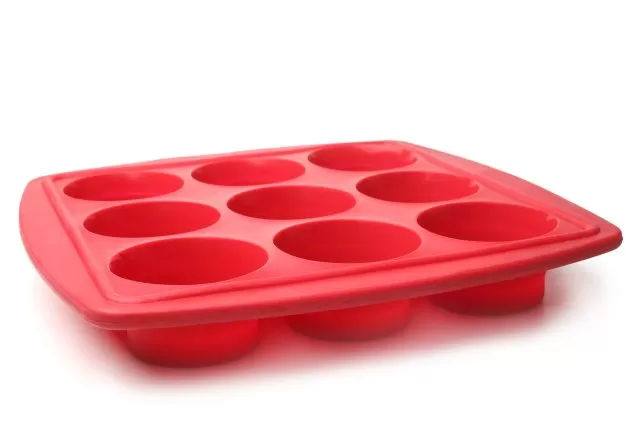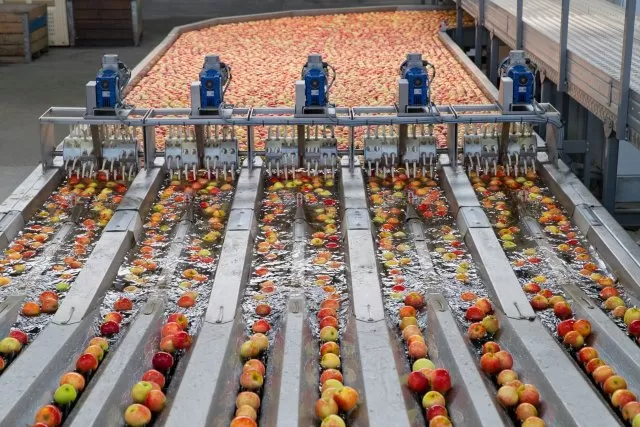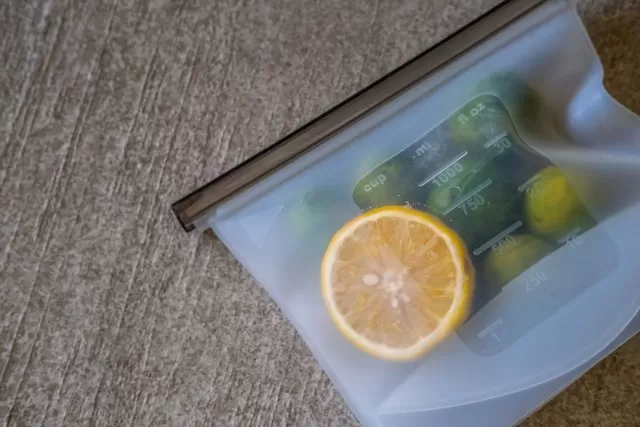Blog
Food Grade Silicone Revealed: Uncover Its Amazing Benefits and Uses
Ever wondered what makes your baking mats non-stick or your spatulas heat-resistant? Meet food grade silicone, a game changer in the food industry. Born out of innovation, this material has evolved over time and now plays a crucial role in keeping our kitchens safe and efficient.
Its superpower lies in its non-toxic, heat-resistant properties that make it a go-to choice for various kitchen tools and appliances. But it’s not just about convenience; food grade silicone also helps uphold stringent food safety standards. So next time you’re whipping up a culinary masterpiece, remember the silent hero – food grade silicone!

Composition of FDA Approved Silicone
Silicone, a versatile and popular material, owes its unique properties to four key elements: silicon, oxygen, carbon, and hydrogen. Each plays a crucial role in the functionality and safety of food grade silicone.
Key Elements
Silicon: The backbone of silicone structure. It provides strength and stability.
Oxygen: Bonds with silicon to form siloxane backbone. This gives silicone its flexibility.
Carbon & Hydrogen: Attached to the siloxane backbone. They provide resistance against heat and chemical reactions.
These components work together to create a product that is durable, flexible, resistant to temperature changes, and safe for food contact.
Role in Functionality & Safety
Silicon’s robustness combined with oxygen’s ability to provide flexibility makes silicone an ideal material for various applications. Carbon and hydrogen increase the resistance against heat and chemical reactions ensuring safety when used in kitchen utensils or bakeware.
The composition also impacts the durability of silicone products. The harmony between these elements creates a material that can withstand wear-and-tear while maintaining its shape over time.
FDA Approval Process
For silicone products to get an FDA approval stamp:
Submit detailed information about the composition
Provide data from rigorous testing (heat resistance, chemical reactivity)
Show proof that it doesn’t leach harmful substances into food
This process ensures that only safe materials come into contact with our food.
Impact on Durability & Flexibility
The unique blend of these elements results in an incredibly durable yet flexible product:
Durability: Silicone products can last years without showing signs of wear-and-tear thanks to silicon’s strength.
Flexibility: Despite their durability, they remain flexible due to oxygen bonds allowing them to bend without breaking or losing their original shape.
Unique Characteristics of Food Grade LSR
High-Temperature Resistance
Food grade LSR, or Liquid Silicone Rubber, is a champ in the kitchen. Picture this: You’ve got your oven cranked up to 450 degrees Fahrenheit, and your silicone spatula doesn’t bat an eye. That’s because food grade LSR can withstand high temperatures without losing its shape or functionality. It’s like that one friend who stays cool under pressure – reliable and unflappable.
Baking mats
Spatulas
Cake molds
These are just a few examples where food grade LSR shows off its heat resistance prowess.
Biocompatibility
Now let’s talk safety. Ever had that moment of panic when you accidentally left a plastic spoon on a hot pan? With food grade LRS, there’s no need for such worries. Its exceptional biocompatibility ensures it won’t react with your food or release harmful substances even under high heat. It’s as if it took an oath to do no harm.
Electrical Insulation Capabilities
But wait, there’s more! Food-grade LSR isn’t just about cooking utensils and bakeware; it also plays a crucial role in our kitchen appliances. Thanks to its excellent electrical insulation capabilities, it helps keep things safe and sound around electricity.
Seals in electric kettles
Insulation in microwaves
Gaskets in refrigerators
These are some instances where this material proves indispensable!
Stability Under Extreme Conditions
Last but not least, let’s give a shout-out to the remarkable stability of food-grade LSR under extreme environmental conditions – think freezing cold or scorching heat! It’s like that rugged adventurer we all admire – nothing fazes it!
So next time you reach for that silicone ice cube tray from the freezer or pull out a piping hot silicone baking mat from the oven, remember: you’re holding a piece of high-tech engineering designed for durability and safety.
Benefits and Uses of Food Grade Silicone
The Advantages
Food grade silicone is a champion in the kitchen. Why? Well, it’s got some killer qualities that make it stand out from the crowd. For starters, this stuff is non-reactive. That means it doesn’t care what kind of food you throw at it—acidic, alkaline, spicy—you name it.
And guess what? It also laughs in the face of stains! No more scrubbing till your arms ache to get rid of stubborn food marks. Plus, this superhero material can take the heat…literally! Yep, you can pop your silicone kitchenware right into the microwave without batting an eyelid.
Common Uses
So where might you find this wonder material? Here are a few examples:
Baking molds: Say goodbye to wrestling with your cake to get it out intact.
Spatulas: Flip those pancakes with ease.
Baby bottle nipples: They’re soft on little gums and super easy to clean.
Sustainability Factor
But here’s where food grade silicone really shines—it’s recyclable. In a world where we’re all trying to do our bit for Mother Nature, this is a big deal!
Lifespan Comparison
And if you’re thinking about longevity, then let me tell you something interesting. Compared to its plastic counterparts, food grade silicone has got them beat hands down! So not only are you investing in high-quality kitchenware that lasts longer but also doing your part for the environment by reducing waste.
To sum up, food grade silicone isn’t just another pretty face on your kitchen counter. Its non-reactive nature makes it safe for all types of foods while being stain-resistant keeps your utensils looking new for longer. Its microwave-safe feature gives you convenience like no other material does.
Moreover, its common uses like baking molds and spatulas provide practicality and efficiency in cooking while baby bottle nipples made from it ensure safety and comfort for infants. But perhaps most importantly, its recyclability contributes significantly towards sustainability efforts worldwide.
Lastly, its long lifespan compared to plastic items not only saves money but also reduces landfill waste over time—making food grade silicone an excellent choice for conscious consumers everywhere.

Guidelines for Using Silicone in Mold Making
Food-Grade Silicone: A Must For Edible Products Molds
If you’re into baking or candy-making, you’ve probably used silicone molds. They’re flexible, non-stick, and can withstand high temperatures. But did you know that not all silicone is created equal? It’s crucial to use only food-grade silicone when making molds for edible products.
Food-grade silicone has undergone testing to ensure it’s safe for food contact. It doesn’t contain fillers or dangerous additives that could leach into your food. So next time you shop for a mold, check if it’s made from 100% pure, food-grade silicone.
The Art of Curing Silicone Molds
Creating your own silicone molds isn’t rocket science but does require some attention to detail. Here are the steps:
Mix the two-part silicone rubber according to the manufacturer’s instructions.
Pour the mixture into your mold box slowly to avoid air bubbles.
Allow it to cure at room temperature for about 24 hours.
Remember, curing times can vary based on factors like temperature and humidity, so patience is key!
Post-Use Care: Cleaning And Storing Silicone Molds
After using your mold, clean it promptly to prevent residue buildup:
Rinse with warm water
Use mild soap if needed
Avoid abrasive cleaners as they can damage the mold surface
When storing, keep them flat in a cool dry place away from direct sunlight which can cause warping or discoloration over time.
Safety First: High-Temperature Handling Tips
Silicone molds are heat-resistant up to around 500°F (260°C), making them suitable for oven use. However:
Always use oven mitts when handling hot molds.
Never place them directly on an oven rack; instead use a baking sheet underneath for stability.
So there you have it! With these guidelines in mind, you’re ready to create delicious treats safely and efficiently using food-grade silicone molds. Happy molding!
Comparison: Food Grade Silicone vs Other Materials
Durability Face-off
Let’s kick things off with a good ol’ durability test. Picture this, you’re whipping up some pancakes on a Sunday morning. Your plastic spatula, after countless encounters with the sizzling pan, starts to show signs of wear and tear. It’s melting at the edges, it’s warped – basically, it’s seen better days.
Now imagine using a silicone spatula instead. This bad boy can withstand temperatures up to 600 degrees Fahrenheit without batting an eyelash. It doesn’t warp or melt like its plastic counterpart. Plus, it has a longer lifespan which brings us to our next point.
Cost-Effectiveness Over Time
Sure, silicone kitchenware might cost you a few extra bucks upfront compared to plastic utensils. But here’s the kicker – they last way longer! So in the long run:
You save money by not having to replace your tools as often.
You save time by not having to shop for replacements frequently.
It’s like that old saying goes – buy cheap, buy twice!
Environmental Impact
Next up is environmental impact – and let’s be real, we all need to do our bit for Mother Earth! Compared to other materials such as metal or glass:
Silicone is more energy-efficient during production.
It has a lower carbon footprint because of its long life span.
At end-of-life stage, it degrades into inorganic ash which is less harmful than products made from petroleum-based plastics.
In contrast:
Metals require extensive mining and refining processes which are harmful to the environment.
Glass production involves high temperatures leading to significant energy consumption.
Flexibility and Weight: Ease-of-use Factors
Finally, let’s talk about ease of use factors like flexibility and weight because nobody wants their kitchen experience marred by unwieldy tools!
Silicone kitchenware takes the cake here due to its super flexible nature making it easy-peasy-lemon-squeezy for scraping out every last bit of batter from your mixing bowls (bye bye waste!). Plus they’re lightweight so no more wrist strain while stirring thick doughs or sauces!
On the flip side:
Plastic utensils can break under pressure (literally!)
Metal tools are heavy and can scratch your non-stick pans
Glass utensils are fragile and can shatter easily
So there you have it folks! When comparing food-grade silicone against other materials in terms of durability, cost-effectiveness over time, environmental impact and ease-of-use factors such as flexibility and weight – silicone seems pretty hard to beat!
Maintaining Your Food Grade Silicone Products
Cleaning Methods
First off, let’s dive into cleaning methods that can extend the life span of your food grade silicone products. You’d be surprised how simple it is!
Hand Wash: Just like you would with any other kitchen utensil, wash your silicone items with warm water and mild dish soap.
Dishwasher Safe: Most food grade silicone products are dishwasher safe. Pop them in the top rack for a thorough clean.
Baking Soda Paste: For stubborn stains or smells, create a paste from baking soda and water and scrub gently.
Remember to dry these items thoroughly before storing them away to prevent mold growth.
Storage Tips
Storing your silicone products properly is crucial in preventing deformation or damage.
Avoid Folding: Silicone is flexible but frequent folding can cause wear-and-tear over time.
Store Flat or Hang: If possible, store flat in a drawer or hang them up using the hole at the end of most utensils.
Keep Away from Sharp Objects: This prevents accidental punctures or cuts.
Identifying Wear-and-Tear Signs
Just like anything else in your kitchen, silicone utensils won’t last forever. Here are some signs that it might be time for a replacement:
Discoloration: If your once vibrant spatula now looks dull and faded, it could be a sign of degradation.
Change in Texture: If the surface feels sticky or has become rough, this could indicate wear-and-tear.
Tears or Cuts: Any visible tears or cuts on the product mean it’s definitely time for a replacement.
Advice Against Using Sharp Objects
Silicone is durable but not invincible! Using sharp objects can cause unnecessary damage.
Use Wooden Utensils Instead: When cooking with silicone bakeware, use wooden spoons instead of metal to avoid scratching or cutting the surface.
Avoid Knives & Forks: Never cut food directly on a silicone mat or tray as it can leave permanent marks or even punctures.
So there you have it! With proper care and attention to detail, you’ll find that maintaining your food grade silicone products isn’t rocket science – just good old common sense coupled with some handy tips and tricks!

Significance of Food Grade Silicone
Food grade silicone, the FDA-approved material, is a game-changer in various industries. It’s not just about its composition but also its unique characteristics that make it stand out. From being flexible and heat resistant to being odorless and tasteless, food grade LSR has got it all.
This silicone isn’t just for show; it’s packed with benefits and uses that you might not have thought of. Imagine baking without worrying about your pan melting or your food sticking? That’s what food grade silicone can do! AndThis material follows strict guidelines ensuring safety and quality.
But wait, there’s more! Compared to other materials, food grade silicone takes the cake. Its durability is unmatched, providing long-lasting use without compromising performance. Plus, maintaining these products is as easy as pie – a simple wash here and there keeps them in top shape.
So why settle for less when you can have the best? Make the switch now!
Remember: Your health matters. Choose wisely!
FAQs
Q1: Is food grade silicone safe?
Absolutely! It’s FDA approved which means it meets the standards set by authorities ensuring its safety for use.
Q2: How do I maintain my food grade silicone products?
Maintaining these products is quite simple. A regular wash with soap and water will keep them clean and ready for use.
Q3: Can I use my food grade silicone molds in the oven?
Yes, you can! One of the unique characteristics of this material is its heat resistance making it perfect for oven-use.
Q4: Does using food-grade silicone affect the taste of my food?
Not at all! Food grade silicone is both odorless and tasteless so rest assured that your meals will be as delicious as ever.
Q5: Is there any difference between regular silicone and food-grade silicone?
Indeed there is. The main difference lies in their composition where food-grade silicones are made free from fillers unlike regular ones.
Check out GE SCS1000 Contractors for an excellent Food Grade Sealant approved by the FDA and USDA
FDA: The following SCS1000 sealants/colors are compositionally in compliance with 21 CFR 177.2600, “Rubber articles intended for repeated use”, 21 CFR 175.105 “Adhesives” and 21 CFR 175.300 “Resinous and Polymeric Coatings”: SCS1001, SCS1002, SCS1003, SCS1009 and SCS1097. The use of these adhesive sealants is subject to the following conditions: • The adhesive sealant is applied in accordance with Good Manufacturing Practice at a thickness not to exceed 6mm (1/4 inch) from an exposed edge. • As a continuous film between joints acting as a functional barrier between the food and the substrate (area underneath the joint).
USDA: MPM has on file documentation from USDA which states that SCS1001, SCS1002, SCS1003 and SCS1009 sealants are chemically acceptable for use on surfaces in official establishments operating under the Federal Meat and Poultry Inspection Program. SCS1097 (Bronze) doesnot meet USDA acceptance criteria. For further information, contact MPM Product Regulatory Compliance. The final granting of authorization for the proposed use of such compounds is the responsibility of the inspector in chargeof the official plant. Technical assistance will be provided by the Product Safety Branch of USDA upon request.




